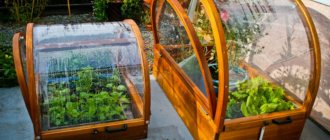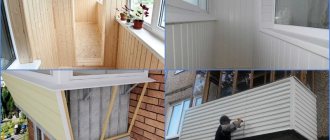Now we are becoming more careful in choosing food, especially from an environmental point of view. And this is the right decision, since human health depends directly on the type of food. Many people prefer to grow fruits and vegetables in their gardens or dachas. If you love fresh and tasty food, you like to grow plants and flowers, then organizing a vegetable garden on your balcony will not be difficult for you. By personally monitoring the growth of fruits and vegetables, you will definitely be sure of their purity.
Watercress
Watercress, also known as bedbug, is an annual or biennial herbaceous plant of the Cruciferous family with small leaves of a piquant taste.
Watercress is a champion in terms of ripening speed (some of its varieties are ready for cutting within two weeks after sowing). Its sprouts can be grown in the off-season and without additional lighting. However, all varieties of cress are suitable for a window sill or balcony due to their early ripening, cold resistance and unpretentiousness.
And it can be grown even without soil! Hydrogel, just an ordinary sponge, porous paper or cotton wool moistened with a weak solution of complex fertilizers or ordinary water are suitable as a substrate for watercress.
Water them daily and after 2-4 days shoots will appear. Regularly spray the seedlings with a spray bottle. When the plants reach a height of 7-8 cm, cut them with scissors.
Varieties of watercress for growing at home: Vitaminchik, Dansky, Dukat, Vesenny, Vest, Prestige, Vanka curly, Abundant-leaved.
When to plant
Seedlings on a sunny balcony
Having chosen for yourself what to plant on the balcony, we move on to the next question. Depending on the orientation of the balcony to the cardinal points, the timing of planting will be determined. The south side will provide a lot of light. At the end of April, you can plant the seeds immediately in a permanent place. The western side is less illuminated, so it is better to postpone planting to the end of May. The north side of the balcony is also suitable for planting, but they should start in June. You can also use seedlings to speed up the process of fruit appearance. You can grow seedlings on sunnier windowsills or buy them. When growing seedlings in a garden on a window, it is recommended to turn the container towards the sun with the other side every two days so that it grows even and strong.
Note: Strawberry seedlings, when placed in a warm room, mark the arrival of spring and begin to develop. Therefore, if the balcony is insulated, you can grow strawberries all year round.
What vegetable crops grow well on the balcony?
Before you build a balcony garden, decide what it is for. If you don’t have time to take care of your plants, you don’t want to dig into the ground, and spending on fertilizer will be unnecessary - greenery on the balcony is your option. It looks presentable, has a pleasant herbal smell, and is unpretentious. Its composition is as healthy as possible and will fill any dish with vitamins and flavors.
What to plant:
- To obtain green onions, they use seedlings of onions, chives, and spring onions;
- unpretentious varieties of lettuce “Odessa”, “Snezhinka”, watercress, “May”;
- parsley, dill;
- basil;
- mint, coriander;
- chard, chervil.
If you want to grow fresh vegetables on the balcony for salads and preparing other dishes, then you need to start seedlings in advance. Choose low-growing plants so as not to end up with a jungle. Containers for these types of vegetables must be strong and stable.
Suitable for growing yourself from seeds:
- hot peppers;
- Cherry tomatoes;
- cucumbers;
- sweet paprika.
For the aesthetic pleasure of watching the climbing vine, beans or peas are planted. For contrast, you can plant berries. Some bush varieties do well in balcony conditions with proper care, for example:
- strawberries;
- currant;
- blueberry;
- raspberries;
- physalis;
- figs
Peas
No, we are not suggesting that you find a miracle variety of peas that will delight you with ripe pods within a month - even in the earliest ripening varieties, at least 55-60 days pass before technical ripeness. But you can safely plant peas for their juicy, tasty and healthy sprouts, which will be an excellent addition to salads. And then, you see, the young pods will arrive in time.
Before sowing, pea seeds must be prepared. To do this, wrap them in damp toilet paper, wrap them in cling film and leave them on the radiator for a day.
After this, sow the peas to a depth of 3-5 cm, based on the norm of 80-130 seeds per 1 sq.m.
When the sprouts hatch, move the container with the peas to a bright, warm place and do not forget to water as the soil dries.
20 days after germination, the sprouts can be cut and eaten.
- Pea varieties worth planting this spring
Spring peas are an excellent choice for any summer resident.
Wooden rack
Advice: if you decide to make a rack from wood, then you must choose well-dried material. It is also necessary to sand it before use.
First, we make a wooden frame consisting of vertical bars along the height of the balcony and connected by horizontal bars on the floor and ceiling. To fix the frame, holes are drilled in the timber and marks are made on the wall through them. We fix the frame using self-tapping screws.
Tip: it wouldn’t hurt to fasten the racks with metal corners.
Then between the vertical posts we install transverse horizontal slats on which the shelves will be installed. After checking the reliability of the assembly, we lay and secure the shelves. To further protect the rack from moisture and temperature changes, cover it with drying oil and then varnish, this will add shine to the furniture.
To make the rack even more convenient, you can install two pairs of doors. Also, if you plan to place flowerpots or containers with seedlings on the shelves, then the doors can be hung only on the part of the rack that will be occupied by things that need to be visually hidden.
What can you plant?
In the garden on the balcony you can plant plants such as:
- cucumbers, tomatoes, peppers;
- lettuce, chard, celery;
- beans, peas;
- green onions;
- radish;
- dill, cilantro, parsley;
- strawberry.
Return to content
Vegetables
To grow cucumbers This vegetable requires sun, so place them only on the south side. Cucumbers can be planted in a flower container with special ventilation.
Read here: How to grow cucumbers and tomatoes on the balcony
Tomatoes are also lovers of sunlight; the ideal place for them would be the southwest side of the balcony.
It is very important to choose the right variety to ensure the desired results are confirmed. The plant should be low. The best choice for a vegetable garden on the balcony would be an early ripening variety.
Pepper is also a lover of light and heat. For vegetable gardens on the balcony, peppers need to be grown using seedlings. The seeds are planted in boxes and the fruits appear within three weeks.
Radishes love cool air. Seeds are planted at a distance of 5 cm from each other. Suitable temperature is 6-8°C, maximum is 18°C.
Carrots grow well in cool weather, that is, in spring or autumn. Containers for carrots should be deep and have holes.
Before planting carrots, you need to choose a variety of carrots that does not grow higher than 5-8 cm. It is better to plant carrots at a temperature of 7 ° C outside. Best growth occurs at a temperature of 15-23°C.
In the summer, carrots should only be placed on the balcony in the shade; the temperature is 10°C lower than in an open place.
In order for carrots to grow better, you need to use balanced fertilizer mixtures that have a low level of nitrogen.
When carrots reach a height of 5 cm, they need to be thinned.
Return to content
Greenery
Parsley grows well in boxes with a shallow bottom. Planting of seeds occurs in early April. It is better to take an early ripening variety, which produces a lot of greenery. Water the soil with warm water, make a depth of 1 cm, sow, and water again. Water the crops every day.
Dill is a very docile type of green. The recommended temperature is 17° C. Planting is identical to parsley.
Lettuce leaves will become a decoration for your vegetable garden on the balcony. Sow seeds shallowly in holes 1 cm deep. It is better to keep the salad in a dark place until the shoot appears.
Lettuce loves moisture and needs regular watering. The first harvest will be in 3 weeks.
Cut off the outer leaves equally from all bushes, you need to leave the middle, then the sprouts will be constantly renewed, and there will be a lot of harvest.
Preparing seeds for planting
If you decide to create a garden “from scratch”, that is, start with seeds, then they need to be prepared in advance in order to reap a larger harvest. Some seeds require pre-soaking for a day, especially for carrots or seeds with a dense shell or the presence of essential oils. Wrap them in gauze and put them in water. Place the container with water in a dark place. For example, cucumber seeds need to be soaked for 12 hours. Remember that you need to change the water every 3-4 hours, and sometimes remove the seeds themselves to get oxygen.
All this can be grown on the balcony
You can plant already germinated seeds to be sure that they will definitely produce inputs. To do this, take a saucer and place a glass plate on it. Pour the seeds onto the cheesecloth, pour a little water over the saucer, but do not wet the plate. The ends of the gauze will absorb moisture and the seeds will germinate.
Soil for a balcony garden
It is easier for a city dweller to buy ready-made soil; it goes on sale in a network of specialized stores and supermarkets.
But if you have the opportunity and desire, you can prepare the mixture yourself, taking into account the requirements of the plants that you are going to grow.
The soil mixture for vegetables should consist of:
- 5 parts peat,
- 1 part soil
- 3 parts humus.
You can follow other recipes:
- humus 2 parts, earth - 1 part;
- earth - 1 part, sand - 1 part, humus - 2 parts.
If it is possible to use turf soil, then to 1 part of it you can add 7 parts of humus and 1 part of mullein. Or add 1 part of turf soil to 2 parts of humus.
The advantages of earthen mixtures rich in humus are obvious: the plant will not require organic fertilizing throughout the entire growing season. This will greatly simplify care and help increase the yield of vegetable crops.
Video
A DIY vegetable garden on the balcony will become an interior decoration. If you don't like soil, there is a way to grow a plant without soil.
Hydroponics grows seedlings using water and a nutrient solution. If the proportion of water, oxygen and nutrients is correctly selected, you can get excellent results. Such a garden without soil will ensure the cleanliness of the balcony, increase productivity, do not accumulate harmful substances from the soil, do not require frequent watering, and are not prone to disease.
Return to content











